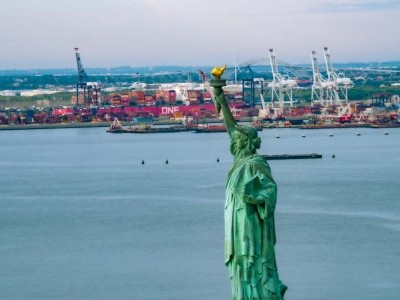Some Chinese ports are jammed again on intensive testing of food
Intensive testing of meat, seafood and other products for the coronavirus has tripled customs clearance times at some major Chinese ports, raising concerns the delays could ensnare global trade flows.
It normally takes about three days to clear the produce but is now taking as long as 10, said an official with Bojun Supply Chain Co., which provides buyers with customs clearance services on foods including frozen products.
China began testing cold food shipments for the virus last month in a move it says is aimed at protecting the public’s health, after imported salmon was singled out as a possible culprit for Beijing’s fresh Covid-19 outbreak in June.
The testing, coupled with large arrivals of cold-storage food, have resulted in congestion at some ports, Li Xingqian, a commerce ministry official told reporters Friday. Still, the ministry wants to mitigate any impact on trade, he said.
Back in early March, when the virus outbreak in China was at the cusp of exploding into a global pandemic, lockdown measures in the top importer of commodities had led to a dearth of port workers. As a consequence, unloading hold ups and delays in returning vessels led to a shortage of containers, with everything from Thai curry to Canadian peas left stuck at ports around the world.
The Tests
About 227,934 samples have been taken from cold-storage food products by China customs, of which six tested positive for the virus, officials said at the briefing Friday. Domestically, nearly 60,000 food samples have tested negative, they said.
Beijing has manged to control the spread of the virus, and the tests will help to curb another outbreak, said Lin Guofa, a senior analyst at Bric Agriculture Group, a Beijing-based consulting firm. Though China needs more meat, the testing may put off exporters from selling to the Asian nation in case it gets caught up in the process, he said.
“It is definitely taking a longer time to clear customs,” Lin said. Also, now “buyers are not so willing to import any more due to potential risks while exporters may choose not to export because of the strict testing.”
Similar Stories

Strike updates on Canada’s West Coast and Port of Montreal
View ArticlePorts awarded more than half a billion in MARAD PIDP Grants
The $580 million in grants awarded today range in size from more than $53 million for the Port of San Juan Puerto Rico to restore key wharves to $708,750 for…
View Article
Port of Hamburg: Sustained growth in hinterland transports
View Article
Port of Hueneme and Port of Paita sign MoU to establish a sister port relationship
View Article
New electric yard truck helps Port of Tacoma demonstrate zero-emission technology
View Article
Port Authority of NYNJ proposes $9.4 billion budget for 2025
View ArticleGet the most up-to-date trending news!
SubscribeIndustry updates and weekly newsletter direct to your inbox!





